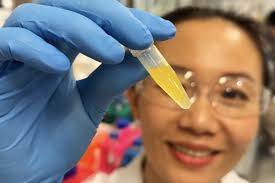
Breaking News
 Jimmy Dore Compares Trump's Endorsement of Overthrowing Libya to His Actions in Venezuela
Jimmy Dore Compares Trump's Endorsement of Overthrowing Libya to His Actions in Venezuela
 Pfizer mRNA Found in Over 88% of Human Placentas, Sperm, and Blood -- and in 50% of Unvaccinated...
Pfizer mRNA Found in Over 88% of Human Placentas, Sperm, and Blood -- and in 50% of Unvaccinated...
 "All real footage, no CGI, no AI, no video speed-up." Looks fake to me – their robot…
"All real footage, no CGI, no AI, no video speed-up." Looks fake to me – their robot…
 This Immigrant Admitted Their Plan for White PeopIe in America And It's Far Worse Than Most Thou
This Immigrant Admitted Their Plan for White PeopIe in America And It's Far Worse Than Most Thou
Top Tech News
 Build a Greenhouse HEATER that Lasts 10-15 DAYS!
Build a Greenhouse HEATER that Lasts 10-15 DAYS!
 Look at the genius idea he came up with using this tank that nobody wanted
Look at the genius idea he came up with using this tank that nobody wanted
 Latest Comet 3I Atlas Anomolies Like the Impossible 600,000 Mile Long Sunward Tail
Latest Comet 3I Atlas Anomolies Like the Impossible 600,000 Mile Long Sunward Tail
 Tesla Just Opened Its Biggest Supercharger Station Ever--And It's Powered By Solar And Batteries
Tesla Just Opened Its Biggest Supercharger Station Ever--And It's Powered By Solar And Batteries
 Your body already knows how to regrow limbs. We just haven't figured out how to turn it on yet.
Your body already knows how to regrow limbs. We just haven't figured out how to turn it on yet.
 We've wiretapped the gut-brain hotline to decode signals driving disease
We've wiretapped the gut-brain hotline to decode signals driving disease
 3D-printable concrete alternative hardens in three days, not four weeks
3D-printable concrete alternative hardens in three days, not four weeks
 Could satellite-beaming planes and airships make SpaceX's Starlink obsolete?
Could satellite-beaming planes and airships make SpaceX's Starlink obsolete?
Nano-cubosome eyedrops target macular degeneration without needles

Researchers at the Royal Melbourne Institute of Technology (RMIT), along with scientists from the Centre for Eye Research Australia (CERA), used a nano-carrier formula to deliver lutein – a macular pigment found in leafy greens and eggs – to the back of the eye, a target usually reachable only by injection. In mice, the formulation reached retinal tissue and stayed shelf-stable at room temperature for months, setting it up as an easier, preventive therapy that could offset the need for injections.
The team developed a patented nanotech "cubosome" delivery system – like tiny lipid boxes that shield fragile cargo – then loaded it with lutein extracted from Gac fruit. Gac fruit (Momordica cochinchinensis) is a bright orange-red melon native to Southeast Asia (g?c in Vietnam). Its soft, red pulp is extremely high in carotenoids (especially lycopene and beta-carotene) and lutein and zeaxanthin. In the lab, the eyedrops protected retinal cells from stress linked to vision loss – and, importantly, they reached the target, the retina, in the animal model.
"Our cubosome carriers act like tiny shields, keeping the compound safe and releasing it in a controlled way once it's inside the eye," said co-lead researcher Charlotte Conn, from RMIT's School of Science.
While in the early stages, it's cleared one of the big hurdles with this sort of treatment – getting enough of a delicate molecule through the cornea and on to the posterior eye in a controlled and targeted way. And because the researchers have developed a blueprint of a delivery system, it opens up the possibility to transport different kinds of drugs to the retina.
"Frequent eye injections are uncomfortable and can be distressing for patients," said Dao Nguyen, who co-led the research at RMIT, and is now at Deakin University's School of Medicine. "People could use the eyedrop as a preventative measure that could reduce the risk of developing late-stage diseases and the need for injections."
Lutein concentrates in the macula, where it helps filter high-energy blue light and dial down oxidative stress – two contributors to retinal damage. Plant-derived compounds (not just carotenoids like lutein and zeaxanthin but also polyphenols) that act on inflammatory and oxidative pathways have the potential to help preserve eye health and protect against age-related degeneration. However, supplements and diet are less effective ways of getting these beneficial compounds to where they need to go; many molecules are unstable and have poor bioavailability, so a smart system of delivery straight to the retina – which is also safe to use – would be a game-changer.
"This is a technology with broad potential," said team leader Tien Huynh, an associate professor at RMIT's School of Science. "We've shown it can protect fragile ingredients and carry them safely to the back of the eye, which has long been a barrier for treatments."

 First totally synthetic human brain model has been realized
First totally synthetic human brain model has been realized Mach-23 potato gun to shoot satellites into space
Mach-23 potato gun to shoot satellites into space

